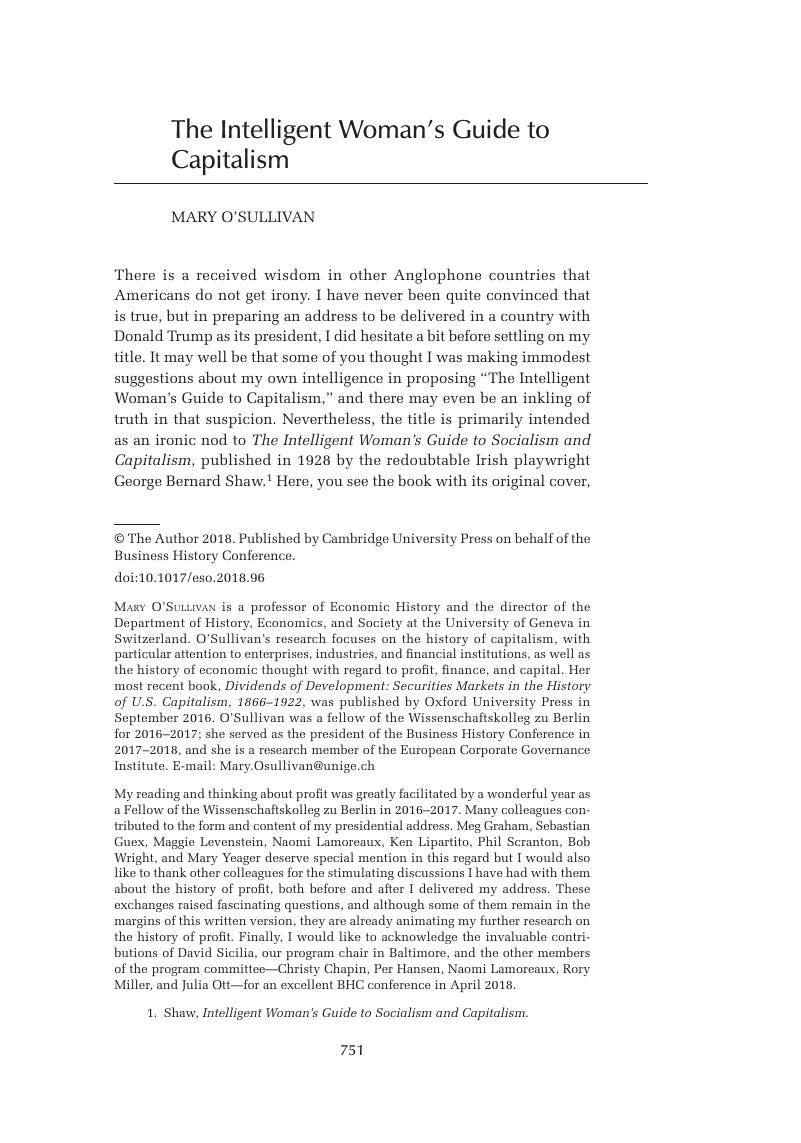Published online by Cambridge University Press: 09 November 2018

My reading and thinking about profit was greatly facilitated by a wonderful year as a Fellow of the Wissenschaftskolleg zu Berlin in 2016–2017. Many colleagues contributed to the form and content of my presidential address. Meg Graham, Sebastian Guex, Maggie Levenstein, Naomi Lamoreaux, Ken Lipartito, Phil Scranton, Bob Wright, and Mary Yeager deserve special mention in this regard but I would also like to thank other colleagues for the stimulating discussions I have had with them about the history of profit, both before and after I delivered my address. These exchanges raised fascinating questions, and although some of them remain in the margins of this written version, they are already animating my further research on the history of profit. Finally, I would like to acknowledge the invaluable contributions of David Sicilia, our program chair in Baltimore, and the other members of the program committee—Christy Chapin, Per Hansen, Naomi Lamoreaux, Rory Miller, and Julia Ott—for an excellent BHC conference in April 2018.